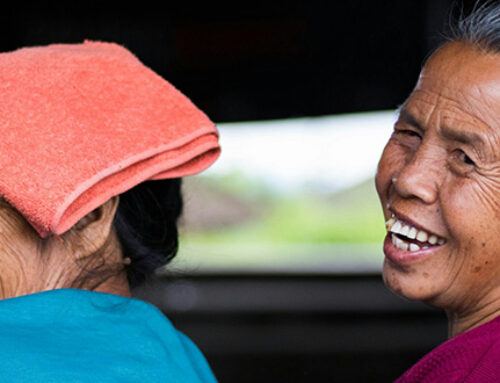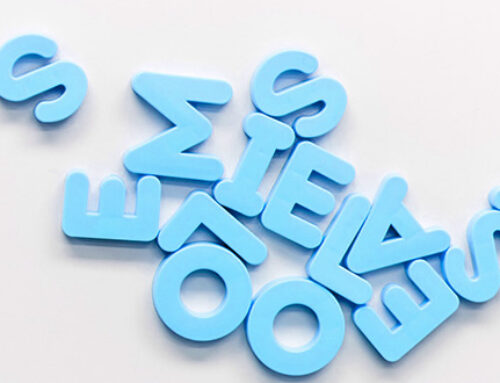I’ve sometimes wondered what a visit to the Holy Land would be like. What will I see, and what will I think of the ancient, weathered stones hiding beneath or between modern-day structures? How will I feel when I read the Bible after seeing tangible archeological evidence of what I already believe? Will it change me?
Dr Titus Kennedy presented a fascinating symposium based on his book Excavating the Evidence for Jesus and it rekindled my interest in the area.
Imagine looking up at the Eastern Gate and rereading the account of Jesus’s entry into Jerusalem. Or touching one of the olive trees descended from those Jesus walked through while praying before his arrect in the Garden of Gethsemane.
So, I opened up Google Maps and started plotting the archeological sites Kennedy mentioned and a few more: In His Footsteps list of saved places.
Note: I’ve numbered these sites in (more or less) chronological order, but in practice, it may make sense to visit the northern ones first and then the southern ones.
- Church of the Nativity, Bethlehem
Although some scholars say that Jesus was born in Nazareth, Galilee, the second-century Greek philosopher Celsus agrees with Luke (2:4–7), saying Jesus was born in a village in Judea.
- Sisters of Nazareth Convent, Nazareth
Jesus spent most of his childhood in Nazareth. (Luke 2:39–40) There is archeological evidence of Jewish occupation of Nazareth, and the remains of an ordinary, first-century Galilean home were found under an elaborate Byzantine church.
- Bethany Beyond the Jordan
John the Baptist baptized Jesus in the Jordan River. (Matt 3:13–17; Mark 1:9–11) The UNESCO World Heritage Site called “Bethany Beyond the Jordan” on the eastern bank of the Jordan River shows evidence of religious activity dating as far back at the fourth century.
- Synagogue, Capernaum
Jesus began his ministry at the synagogue in Capernaum. (Luke 4:31–33) At this site, one can see the remains of the first-century synagogue (black basalt) under those of the fourth- to fifth-century synagogue (white limestone).
- Peter’s House, Capernaum
A short walk from the synagogue is the museum where the remains of a first-century house were found beneath the Byzantine church. The ancient inscriptions on the walls (talking about Jesus, and one mentioning Peter) and its consistency with what Egeria wrote about her fourth-century pilgrimage to the area suggest this was the house of Peter, where Jesus spent much time during his ministry.
- The Sea of Galilee
The first disciples Jesus recruited were fisherman, (Matt 4:18) Peter stepped out of the boat to join Jesus in walking on water, (Matt 14:22–32) and Jesus and the disciples were crossing the Sea of Galilee in a boat when Jesus calmed the storm. (Luke 8:22–26)
In 1986, when the region experienced a drought, two brothers found the remnants of a boat sticking out of the newly exposed mud on the edge of the Sea of Galilee. It was dated to 50 BC–50 AD and fits the description of the Sea of Galilee’s fishing boats written by the first-century Jewish historian Josephus. This “Galilee Boat,” now on display in Kibbutz Ginosar at the Yigal Alon Museum, is an example of the kind of fishing boat Jesus and his disciples would have used.
- Jacob’s Well, Askar
In Palestine, near a village called Askar, a Greek Orthodox church protects an ancient well that almost all Jewish, Christian, Samaritan, and Muslim scholars agree is where Jesus’s conversation with the Samaritan woman took place. (John 4)
- Temple Mount, Jerusalem
The incident where Jesus cleansed the temple of Jerusalem is well known. (Matt 21:12–13) Temple Mount is widely accepted to be the site of the ancient temple. This is also where Jesus was presented as a one-month-old (Luke 2:22–24) and where, at 12 years old, Mary and Joseph found him speaking to the religious leaders. (Luke 2:42–46)
- The Western Wall Excavation, Jerusalem
The destruction of the temple was prophesied by Jesus himself (Matt 24:2) and the rocks thrown down by the Roman soldiers were discovered at the southern end of the Western Wall on a first-century street.
- The Pool of Bethesda, Jerusalem
Numerous ancient texts talk about the Pool of Bethesda being used to wash sacrificial sheep and John 5 describes how Jesus healed a man who’d been “an invalid for thirty-eight years” (5:5 NIV) at a pool called Bethesda near the Sheep Gate. (5:2)
- The Pool of Siloam, Jerusalem
John 9 speaks about Jesus healing a blind man at the Pool of Siloam. The first-century pool was discovered by accident in 2004, during repairs to the drainage system of the fifth-century Byzantine Pool of Siloam built by Empress Eudocia.
- Eastern Gate, Jerusalem
Jerusalem’s Eastern Gate is its oldest and is thought to have been sealed in the 1500s by a Muslim sultan in an attempt to stop the Jewish Messiah from entering Jerusalem (Too late!). Underneath the “current” sixth-century gate, the remains of a gate dating to the first century have been found.
- Church of the Apostles on Mount Zion, Jerusalem
Jesus shared the Last Supper with his disciples not long before his arrest. (Luke 22) Foundations dating to the first century have been found under this site.
- Gethsemane, Jerusalem
The Garden of Gethsemane is an olive orchard dating back to the first century. Although there is no way to know for sure if the rock in the current Byzantine church is, in fact, where Jesus prayed before his arrest, (Mark 14:32–42) the location and age of the orchard is consistent.
- Kathros family house, Jerusalem
Although there are three feasible sites for where the trial of Jesus took place, (Luke 22:66–71) the one Kennedy considers to be most probable is the Kathros family house, which we know was a high priestly house in the first century.
- Tower of David Museum, Jerusalem
Jesus was then put on trial before Pontius Pilate in the former palace of Herod the Great. (Luke 23:1–25) Parts of the findings of the 1970s excavations in the Tower of David area of the Armenian Quarter have been published and show the stone pavement and “Gabbatha” where Jesus would have stood.
- The Israel Museum, Jerusalem
This would be a good point at which to visit the Israel Museum, where the following items are housed:
- The remains of a first-century crucifixion victim, Yehohanan, showing a nail through the heel bone.
- The Pontius Pilate inscription, which was discovered in Caesarea in 1961 and mentions Pontius Pilate by name and confirms his station as the Prefect of Judea.
- The Caiaphas Ossuary: A box containing the bones of a 60-year-old man, inscribed with his name, discovered in a first-century tomb in 1990. We know that Caiaphas was the name of the high priest who presided over Jesus’s trial. (Luke 3:2–4)
- Replicas of the Dead Sea Scrolls are on display in the Shrine of the Book. The Israeli Antiquities Authority has been working to digitize the scrolls for over a decade. (And a few of the scrolls are still held by the Jordan Museum.)
- Herodian Family Tomb, Jerusalem
The Herodian Family Tomb is the only first-century tomb in the Jerusalem area that survives today. Although I was not able to find the exact location, Ferrell Jenkins’s blog describes it to be “in a park behind the King David Hotel in Jerusalem.”
- Church of the Holy Sepulchre, Jerusalem
This is the place with the strongest archeological and historical evidence for being the burial place of Jesus.
- Mount of Olives
This is a fitting endpoint for a pilgrimage like this one. Not only does it offer a lovely view of Temple Mount and the Old City, but it is also where Jesus ascended into heaven. (Luke 24:50–51)
I hope to make this trip one day and it would be humbling to experience so many places steeped in history; but I’m thankful that I can say I don’t need to see these things to believe—the experience of God’s work in my life and how Jesus is with me every step of the way is enough.
After all, as Paul reminded the Corinthians, “We are the temple of the living God.” (2 Cor 6:16 NIV)
- To watch the full master class on the archeological evidence for Jesus, follow this link.
- The related Q&A session can be found here.
- Here you’ll find a Google Maps list of the above-mentioned sites.
Short Bio: Carrie Milton is a veterinarian and language practitioner. After completing her Bachelor of Veterinary Science and working with a variety of animals for a number of years, she reawakened her love for the written word. Accredited by the Professional Editors’ Guild, she has tried her hand at everything from theses to fiction.




